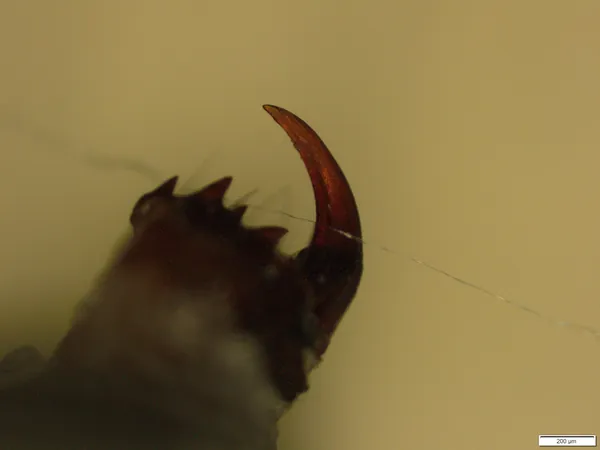
Unveiling Nature’s Secrets: How Spider Fangs Could Revolutionize Cutting Tools!
2024-09-25
Introduction
When most people imagine spiders, they picture the intricate webs they spin, but what is often overlooked is their astounding ability to slice through some of the toughest materials known to humanity. In a groundbreaking study conducted by a research team from the University of Trento, scientists have delved into the astonishing mechanics behind a spider's cutting prowess, showcasing how this natural ability can inspire the design of cutting tools.
Research Study
Recently published in the prestigious journal Advanced Science, this research challenges longstanding beliefs that spiders rely solely on chemical reactions to sever silk and synthetic fibers such as carbon and Kevlar. While it was previously thought that spiders produced enzymes to dissolve these materials, the rapidity with which they cut—especially when faced with threats—suggests that there’s more than meets the eye.
Investigative Team
Professor Nicola Pugno from the University of Trento and his colleague Gabriele Greco, who also works with the Swedish University of Agricultural Sciences, led this intriguing investigation. “We set out to explore how spiders engage with materials outside their natural environment,” noted Pugno. To do this, the team recreated a spider's web using synthetic fibers comparable to those found in nature.
Discoveries
What they discovered was nothing short of revolutionary. Using advanced scanning electron microscopy, researchers observed the fangs of spiders up close. The secret to their cutting efficiency lies in the unique shape and structure of the fangs themselves. The team found that the serrations along the fang have a functionally graded spacing that increases toward the tip, optimizing the way the fibers interact with the fangs during cutting. This design allows the fiber to lock in place against a serrated edge, requiring minimal force to achieve a cut, while maximizing efficiency.
Applications and Implications
This fascinating insight not only sheds light on the adaptability and ingenuity of spiders, but also opens up new avenues for innovation in various fields. Pugno remarked on the potential applications of this research, underscoring that the principles gleaned from spider fangs could lead to the creation of sharper, more effective tools for cutting a variety of materials, from wood and metal to food and even hair.
Conclusion
Imagine a world where tools inspired by the formidable design of spider fangs become commonplace, revolutionizing industries and enhancing daily life! As we continue to unlock the secrets of the natural world, the possibilities for innovation could be limitless. Stay tuned for more developments as science progresses towards transforming these incredible discoveries into reality!



 Brasil (PT)
Brasil (PT)
 Canada (EN)
Canada (EN)
 Chile (ES)
Chile (ES)
 España (ES)
España (ES)
 France (FR)
France (FR)
 Hong Kong (EN)
Hong Kong (EN)
 Italia (IT)
Italia (IT)
 日本 (JA)
日本 (JA)
 Magyarország (HU)
Magyarország (HU)
 Norge (NO)
Norge (NO)
 Polska (PL)
Polska (PL)
 Schweiz (DE)
Schweiz (DE)
 Singapore (EN)
Singapore (EN)
 Sverige (SV)
Sverige (SV)
 Suomi (FI)
Suomi (FI)
 Türkiye (TR)
Türkiye (TR)